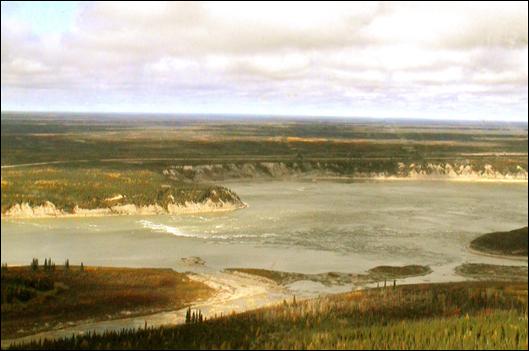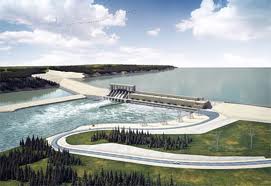


Conawapa Dam — who needs it? Who wants it? Again, it’s that difference between need, and public purpose, and what it is that the utilities want. WANT. DESIRE. It’s anything but need.
A deal was struck so this damn dam would be built, but things have changed, and the Wuskwatim dam is losing money. Now Conawapa, to throw good money after bad? Why? So Manitoba Hydro can make even more electricity to export for profit? Minnesota Power too? Will this business plan be any better?
Premier Greg Selinger once said Manitoba Hydro’s partnerships with First Nations “yield phenomenal social licence.”
Indeed, the fact five hydro-affected First Nations have joined Hydro in development of new dams has lent moral clout to the utility’s ambitious plans.
That moral high ground is eroding. Hydro’s “new era” of northern dealings is in trouble as it sits on the brink of committing to the $6.5-billion Keeyask project.
Phase one of the new era was the Wuskwatim Dam, which went into operation in 2012. Hydro offered Nisichawayasihk Cree Nation the option to purchase a 33 per cent share in the dam.
Hydro, government and NCN said the partnership held great promise for the future. In 2011, a band councillor said Wuskwatim would earn up to $40 million a year, a third of it going to NCN.
It hasn’t worked out that way. According to Hydro, NCN’s share of Wuskwatim’s losses will total $24 million for the past fiscal year and a combined $134 million over the first decade of the dam’s operation.
That’s worth another take. The community of 4,800 people, 80 kilometres west of Thompson, has invested $108.4 million — most of it borrowed from Hydro — in a venture that is predicted to lose the community $134 million over 10 years.
Welcome to the new era.
Hydro has said NCN will not actually have to pay the utility for its share of annual losses, as the original agreement would have required. Hydro will cover those losses for now, incorporating them into its long-term financial agreement with NCN, essentially borrowing from NCN’s future profits to pay for present losses.
One way or another, NCN is stuck with the losses.
Hydro is also stuck with its share of losses, but that’s different. It simply passes them on to ratepayers. But NCN doesn’t have the option of raising anyone’s rates because its revenue stream is based on export prices, not domestic rates.
To be fair, NCN’s benefits from Wuskwatim also included a $5.7-million adverse-effects settlement as well as training and employment opportunities. Hydro and governments spent $60 million on a training program centred at NCN. About one-third of person-hours of employment during the construction of the dam went to NCN members. Less impressive were the turnover rate of 41 per cent and the average duration of employment: eight months.
That was the construction boom. At last report, only four NCN members work at long-term jobs at the dam.
Now four other First Nations — Tataskweyak, York Factory, Fox Lake and War Lake — are lined up for similar “new era” agreements on the proposed $6.5-billion Keeyask dam. They can purchase a combined stake of up to 25 per cent in the dam if they come up with about $375 million.
The “Keeyask Cree Nations” negotiated another option that would amount to a roughly two per cent stake in the dam, with a guaranteed minimum annual payment whether or not the dam makes money. Of course, the payments to the communities would be far less than the windfall once touted under the 25 per cent share.
The current assumption is the KCNs will choose this “preferred” option, providing the First Nations a combined $5 million annually in the early years of the dam.
These communities agreed to the dams based in part on the bold talk of hefty profits and a prosperous future. But the deals were negotiated before the recession and the spike in shale-gas production sank the export market, which is key to the profitability of the dams.
How would they vote today?
What happens if they toss their partnership agreements in the murky old-era waters of the Nelson River, either now or in a decade? Legally they can’t, but morally who could fault future generations for defying this form of partnership?
Hydro’s First Nations partners used to defend the new dams vehemently.
No one talks that way anymore. KCN leaders are contractually required to speak in favour of the dams, but the vigour is largely gone. And the behind-the-scenes grumbling is leaking out.
That’s not what Hydro and Selinger want to hear after paying northern First Nations $241 million for negotiation costs since 1999.
Selinger said last year Hydro’s “legacy of bitterness” in the north has been replaced by a spirit of partnership. Sadly, the new era of dams may exacerbate the bitterness rather than heal it.
Add that social risk to the massive financial risk of Keeyask, and Manitobans should ask whether Hydro has general societal approval to proceed with the dam.
By July, when Hydro wants to start building Keeyask, our utility is likely to have an Environment Act licence and a Water Power Act licence for the megaproject. But will it have a legitimate social licence?
Will Braun works for the Interchurch Council on Hydropower.


